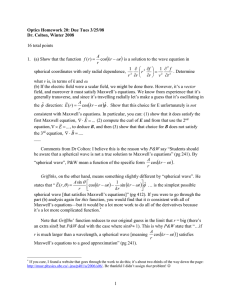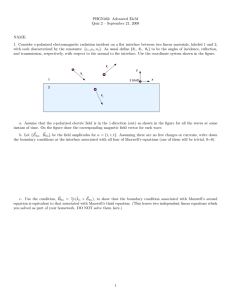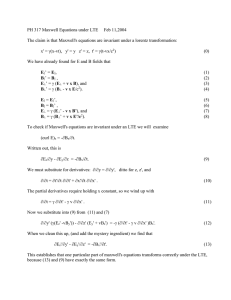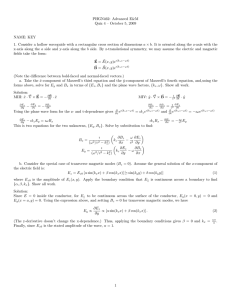hw 20 - fixed.doc
advertisement
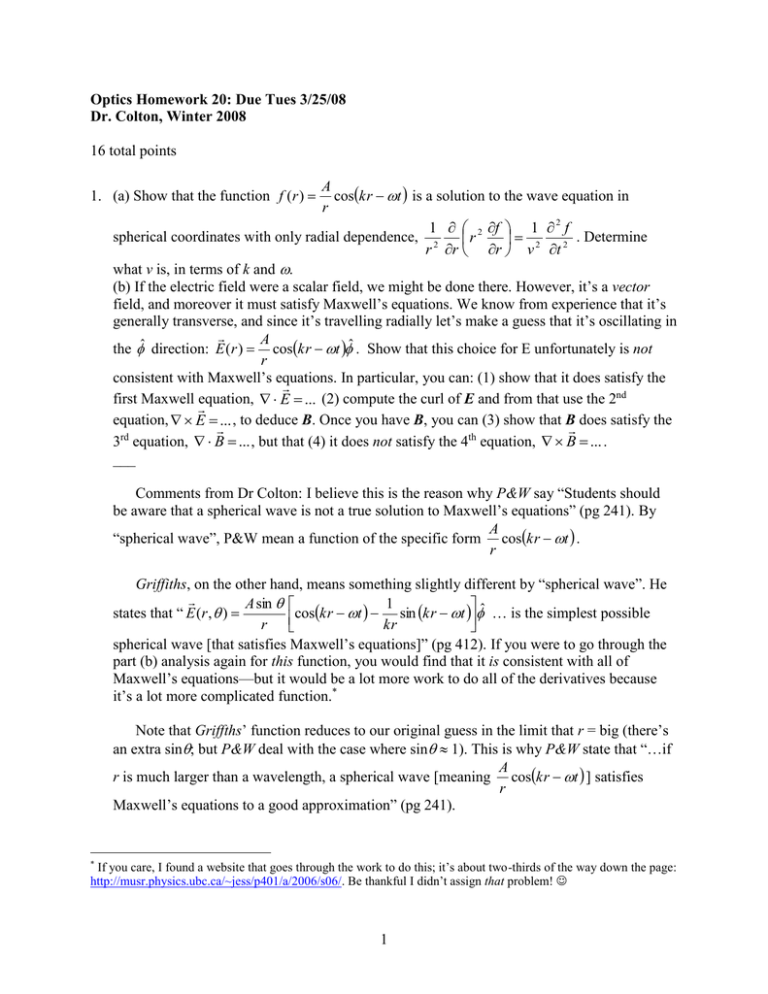
Optics Homework 20: Due Tues 3/25/08 Dr. Colton, Winter 2008 16 total points A coskr t is a solution to the wave equation in r 1 2 f 1 2 f spherical coordinates with only radial dependence, 2 . Determine r r r r v 2 t 2 what v is, in terms of k and . (b) If the electric field were a scalar field, we might be done there. However, it’s a vector field, and moreover it must satisfy Maxwell’s equations. We know from experience that it’s generally transverse, and since it’s travelling radially let’s make a guess that it’s oscillating in A the ˆ direction: E (r ) coskr t ˆ . Show that this choice for E unfortunately is not r consistent with Maxwell’s equations. In particular, you can: (1) show that it does satisfy the first Maxwell equation, E ... (2) compute the curl of E and from that use the 2nd equation, E ... , to deduce B. Once you have B, you can (3) show that B does satisfy the 3rd equation, B ... , but that (4) it does not satisfy the 4th equation, B ... . ___ 1. (a) Show that the function f (r ) Comments from Dr Colton: I believe this is the reason why P&W say “Students should be aware that a spherical wave is not a true solution to Maxwell’s equations” (pg 241). By A “spherical wave”, P&W mean a function of the specific form coskr t . r Griffiths, on the other hand, means something slightly different by “spherical wave”. He A sin 1 coskr t sin kr t ˆ … is the simplest possible states that “ E (r , ) r kr spherical wave [that satisfies Maxwell’s equations]” (pg 412). If you were to go through the part (b) analysis again for this function, you would find that it is consistent with all of Maxwell’s equations—but it would be a lot more work to do all of the derivatives because it’s a lot more complicated function.* Note that Griffths’ function reduces to our original guess in the limit that r = big (there’s an extra sin; but P&W deal with the case where sin 1). This is why P&W state that “…if A r is much larger than a wavelength, a spherical wave [meaning coskr t ] satisfies r Maxwell’s equations to a good approximation” (pg 241). If you care, I found a website that goes through the work to do this; it’s about two-thirds of the way down the page: http://musr.physics.ubc.ca/~jess/p401/a/2006/s06/. Be thankful I didn’t assign that problem! * 1 2. P&W P10.4 3. P&W P10.5 4. P&W P10.7 2
